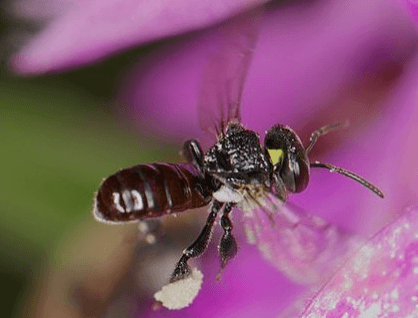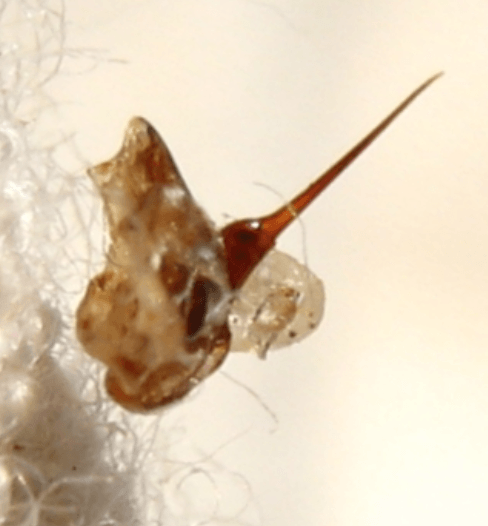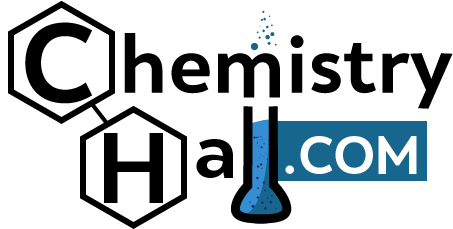I have read from many different sources the same statement about bee vs wasp sting venom:
Bee sting venom is acidic, and wasp venom is basic (alkaline), therefore, the “treatment” or remedy selected to treat each case should be based on this consideration. This would be based on a simple acid-base neutralization.

There is some truth, but also plenty of myth (or popular folklore) behind this reasoning. I’ve read and heard that theory plenty of times, and even I spread it around in the past.
Why?
It is a simple enough explanation. And it makes sense chemically. It makes most chemistry enthusiasts happy. But the real answer is not that simple. That “acid-base neutralization” argument is not correct.
Keep reading and you’ll know why…
What’s on bee and wasps sting venom?
As we have explained before, relative acidity and basicity are measured through the pH scale. By convention we say that any solution or mixture with a pH below 7 is considered acidic, and above 7, basic.
“Venoms” are just solutions or mixtures of different components, some of them are actually poisonous and other components are innocuous. Insect venoms present components of different types:
- Water
- Peptides and proteins (such as enzymes, main responsible of causing pain)
- Small molecules (such as norepinephrine)
The mixture of all those components results in the actual insect venom. This mixture can have a determined pH, so it can be overall acidic, basic or neutral. But this does not imply that the active poisonous molecules can be simply neutralized by treatment with an acid or a base.
Bee vs wasp sting venom: are they actually acidic and basic?
In fact, even though bee venom is indeed acidic, with a pH between 5.0 and 5.5 (which is not alarmingly acidic anyway! Even bananas and tomatoes are more acidic than that), the pH of the sting venom of a wasp is actually very close to neutral (6.8–6.9), as it was disclosed by researchers at Keele University. Furthermore, wasps and bees have both types of glands (some acidic and some basic) from which they secrete their poisonous cocktail.
What are the components of bee venom?

The composition of the venom of different insects can vary significantly. The main responsible from pain after you are stung by a bee are peptides and proteins, although small molecules are also present, which enhance the main effects. These are some of the most important ones from bee sting venom:
- Melittin: It is a peptide, and one of the major toxic ingredients of bee venom. It basically kills and breaks up cells. This toxin stimulates enzymes involved in inflammation.
- Apamin: This globular peptide is a neurotoxin that can pass the blood-brain barrier. Acts on the nervous central system, blocking ion channels.
- Phospholipase A: Enzyme that destroys cells (by breaking its membranes). It is also a strong allergen, responsible of “bee allergy”.
- Hyaluronidase: Enzyme in charge of breaking down carbohydrates from proteins (degradation of hyaluronic acid). This process allows the venom to go through tissue.
- Alarm pheromones: Bees also release pheromones in their poison. These substances attract nearby bees, which will potentially take part on defensive actions (that’s why you should leave the place where you were stung by a bee or wasp).
- MCD Peptide: A peptide responsible for inflammation.
- Small molecules: Not only peptides and enzymes are components of the poison. Small molecules are also present and contribute to the undesired effects that we experience after a bee stung. They basically enhance the effect caused by the former. Some of them are histamine (contributes to pain and itching, and can also be an allergen), serotonin (contributes to the pain, it is an irritant), noradrenaline (responsible of the constriction of the blood vessels, which results on a blood pressure increase).
What are the components of wasp venom?
Surprisingly or not, some of the “ingredients” of both the venoms of wasps and bees are exactly the same. But the main components are different. We will list them below, detailing the components which are exclusive to wasps:
- Wasps and bees share the following components on their poisonous “cocktail”: Phospholipase A, alarm pheromones and hyaluronidase. They also share all small molecular components such as histamine, serotonin, dopamine and noradrenaline.
- Phospholipase B: This variant of phospholipase has a similar effect than the A, but it also plays a role in immobilizing prey.
- Wasp Kinin: This is the main component of wasp venom. The exact structure of this peptide is still not clear. It triggers the immune system, mediating inflammatory responses.
- Acetylcholine: The presence of this small molecule stimulates pain nerves. This might be the main responsible for the high degree of pain that you experience after a wasp sting. Acetylcholine and serotonin are components of wasp venom that “get the nerves on fire”.
These small molecule components will be familiar with anyone with basic knowledge on organic chemistry and molecular biology.

There are more differences, other than chemical, between bee and wasp stings which are usually common knowledge. For example, a bee can only sting once. Then it loses the stinger. In this process, the bee injects a relatively large amount of poison (around 50 micrograms of venom). On the other hand, a wasp injects lower doses (2–15 micrograms). But for wasps it’s not all or nothing: wasps can sting many different times.

What is actually causing pain from the bee and wasp sting venom?
Both wasp and bee sting venoms have a clearly defensive purpose, the venom causes enough pain on the “attacker” to convince them to back off and leave them alone. Furthermore, wasps can also use it as an offensive weapon to paralyze insects (food) and then move them easily to their nests.
But, what is causing the pain?
First off, how do we define pain? Pain is a localized physical suffering sensation, an uncomfortable feeling which has the objective of telling us that something is wrong with our bodies. In simpler terms, is the way our body has of telling your brain that it might be damaged.
The pain caused by wasp or bee venom sting is exaggerated, in the sense that the actual physical damage that we suffered is not that much (in the end, the sole purpose of this defensive mechanism is to scare us off).
But what is going on during this process?
- First, the stinger gets the poisonous mixture into your blood.
- The main destructive components of the venom are the peptides and enzymes in charge of breaking cells down (see previous section). These components rip through many kinds of cells. One of these types of cells happen to be neurons. When neurons are damaged, they send a signal of pain to the brain. This is what actually makes us experience pain.
- The other components of the venomous mixture help to intensify this main process. For example, the blood vessel constriction produced by noradrenaline reduces the venom diffusion away from the sting site, so prolongs and intensifies the local action of the venom. This is also used by your dentist – many use local anaesthetics include phenylephrine (a noradrenaline analogue) to keep the anaesthetic local (thanks, Malcom from comments section!).
- In case of smaller animals as victims, such as small insects, these effects can end up in paralysis. This is a hunting mechanism that wasps use to capture prey.
Myths vs facts: What does or does not help?
Here at Chemistry Hall we are always trying to put myths and facts into perspective.
So, we got a clear picture of what is causing pain after a bee or wasp stings us. In a nutshell, it is basically enzymes and peptides breaking our cells off. Neurons are among those killed cells. This transmits the pain sensation to our brain. Other small molecules, contribute to make this effect stronger and last longer.
So how do you minimize those effects?
Well, I have read on countless occasions that “bee sting is acid, treat with alkali, wasp sting is alkaline, so treat with acid”. It would be cool if it were that simple.
But it is not. Unfortunately, chemistry is never that simple, if you look at it with enough depth.
We already stated that wasp sting venom is not actually basic but neutral. And also, based on the mechanism of action, alkali or base would need to have the potential of destroying the peptides and enzymes that cause pain for being effective as an antidote.
How should you actually deal with wasp or bee sting venom?
If this basic rule is not real, what does in fact work, and why?
Unfortunately, there are not many science-supported remedies, but basically anything that cools or numbs the injury will help. Also, helping the injured getting his mind elsewhere, and off the pain, will help significantly.
We are chemists, we base our conclusions in observations and experiments:
Many people report and claim that vinegar actually helps with both bee and wasp stings! So this piece of empirical data must be the key for understanding what is really happening.
This seems completely contradictory with the hypothesis that you need to neutralize the pH of the venom for it to wear off. After all, both venoms range in pH from 5.0 to 7.0, so lowering it down wouldn’t help, right?
As a matter of fact, vinegar does seem to help, and apparently it is the best home remedy for both stings. Scientifically, we cannot conclude that we are neutralizing any “alkaline compound” of the venomous mixtures. However, it is well known that changes in pH can cause proteins to denaturalize and lose its effect. This might be what is actually happening.
The bottom line is that, a modification on the pH might be actually helping to relief the pain, but it is definitely not through a simple acid-base neutralization process, as many people claim.
I just got stung and it hurts like hell, what should I do!?
Some important and actually helpful steps that you can follow are clear:
- Wash with plenty of soap and water. This is the easiest one to do and also the most helpful.
- Cool down the wound. You can use ice. This will reduce swelling. (Remember to place a napkin, paper towel or actual towel between the ice and your skin, you don’t want to get ice-burnt).
- Although there is no real proof, many people claim that vinegar helps. It definitely won’t hurt trying. Also, other typical home remedy is washing it with alkaline baking soda water solution. Again, there is no proof for this remedy working, and most likely you are getting exactly the same effect that you get by just washing with soap and abundant water.
- You can use an antihistamine spray or tablets if the pain gets too annoying. In case of severe allergic reaction, get medical assistance immediately!
- If you have any history on being allergic or especially susceptible to insect bites, go get medical attention as soon as possible.
- When a bee stings you, it usually leaves the stinger inside your skin. It is not recommended to attempt to remove It by hand (you could make it worse, pushing them further inside your skin). However, you can do it using tweezers.
Is an alkaline treatment good for any sting venom?
There are plenty of venoms in nature, and some of them can actually be neutralized by a simple acid-base reaction. For example, fire ants are known to produce a venom based on different compounds. One of these components is formic acid (although it is not the only one), particularly for ants that “spray” their poisonous cocktails rather than biting or stinging you. Formic acid can be easily neutralized with typical bases such as sodium bicarbonate and baking soda, and relief the pain.
As opposed to bee and wasp sting venoms, the pain caused by formic acid from ants, can be relieved by neutralizing it with a base. For this case, the nice and simple chemical explanation does work.
Bee vs wasp sting: Wrapping up and summary
To wrap up:
Both bee and wasp venoms have similar effects in humans, but their compositions are relatively different. There is no scientific evidence that you can simply neutralize through an acid-base process either poison. Many people claim that vinegar (acetic acid) helps relieving the pain of both, most likely through a protein denaturalization process.
The best and easiest remedy is just washing with soap and abundant water. If you get an allergic reaction, antihistamines help, but if it gets bad, go and reach for medical assistance!
If you enjoyed the reading, now time to to take a look at more scary stuff with spider venom.

This is simply the most insightful article on stings (and ant bites) that I have ever had the good fortune of reading. Thank you very very much for the input!
Thanks, Sandy! Love to be of help
Excellent article! I’m an ecologist and also have to deal with the home remedies for stings here in Australia. Especially from ants. Jumping Ants and Green Ants are the ones I seem to encounter most. I’m always sceptical of folklore, but willing to try them. Working in the field I am very often ‘attacked’ by Jumping Ants and Green Ants. Long ago, I tried an old bushman’s remedy for the bite/stings. Immediately cut an onion, and squeeze the juice onto the site, then apply pressure over the site with the half of the onion you cut. I’ve used this dozens of time, and it lessens the intensity of the pain, and almost eliminates the intense itching that usually follows. The chemistry in this must be interesting.
Thanks for commenting, interesting catch!
It is true that in the end what matters is what works. I’ve heard and read about a lot of remedies, some of which make more scientific sense than others. The bottom line is that in reality, everything is more complex than it seems at first sight.
It is usually recommended to scrape the bee stinger quickly away with your fingernail, but don’t try to pull it out since that may increase the amount of venom getting into the skin.
I got stung on the finger by a wasp in Scotland today and I put hand sanitizer on it and that helped a lot. To clarify the pain is nothing compared to an Australian bull ant or a paper wasp, that is intense long lasting pain.
Good and informative article.
Is it not possible that the acetic acid cleaves a decent amount of the phospholipase B into the a and b branches as the structure has 4 cleavage sights that make it so susceptible to denaturation or delineation……much like egg white. Just thinking out aloud. As a major component in the structure of the venom would that not deplete its ferocity?
Great article. Can offer any advice for people who seek to utilize honeybee (or wasp) venom for its theraputic effects?
I found this article as I got a double sting from a yellow jacket wasp maybe 10 minutes ago. 20% vinegar DOES work like right now for the pain. (Im an organic, small farm Farmer and keep very strong vinegar for weed killing) It may not be because of chemical reaction so much as dilution however. It sure worked for me and Im kinda sensitive to wasp stings. Great article, I learned much.
Tobacco. Snuff, chew or break open a cigarette. Chew to incorporate your saliva or moisten with water and work in your hand to form a wet mass. Apply directly to the sting site. If the stinger is still there brush away and then apply over the injection hole. Immediate relief from pain and swell reduction. It’s the nicotine.
with wasp stings I have personal experience- of vacuuming out the venom – and suffering zero sequelae… using the mouth of a squeezable tablet bottle – ASAP Of Course .
Onion sliced and rubbed or mashed and applied to the site will alleviate all the symptoms within minutes. Have used this method on several individuals with miraculous results. Has been successful on a couple with allergies to bees who didn’t have a Epie pen handy also. Love the article here have gained insight from it keep up the good work
Willard Water. We keep a trigger sprayer of this patented mineral water (diluted from concentrate that I get on Amazon) especially for stings and burns. As soon as one of us gets stung, we douse the site with this and gently rub it in. It is amazing how it takes the pain away.
I have heard that plantain leaves chewed up and applied as a poultice over the site helps a lot, too. I am speculating that it might have some of the same action as the Willard Water since plantain leaves are rich in many minerals.
Nice article.
The point about noradrenaline and blood vessels isn’t quite right. It’s not about the efffect on blood pressure. The blood vessel constriction by noradrenaline reduces the venom diffusion away from the sting site, so prolongs and intesifies the local action of the venom.
This is also used by your dentist – many use local anaesthetics include phenylephrine (a noradrenaline analogue) to keep the anaesthetic local.
Thanks for the insight Malcom! I have corrected it! 🙂
I just got stung by a wasp on my fingertip while taking a migraine nap. I came across the same “myth” (oversimplification), and drew on the sting with a small skin vaccum then applied BHA (2% salacytic acid) exfoliant. I don’t feel a thing other than a mild splinter-like sensation now.
I have a hornet sting on my hand and it is very irritating. This was I am looking fo simple ways to help my hand.
baking soda has always worked for me and kids/grand children. have used it for years